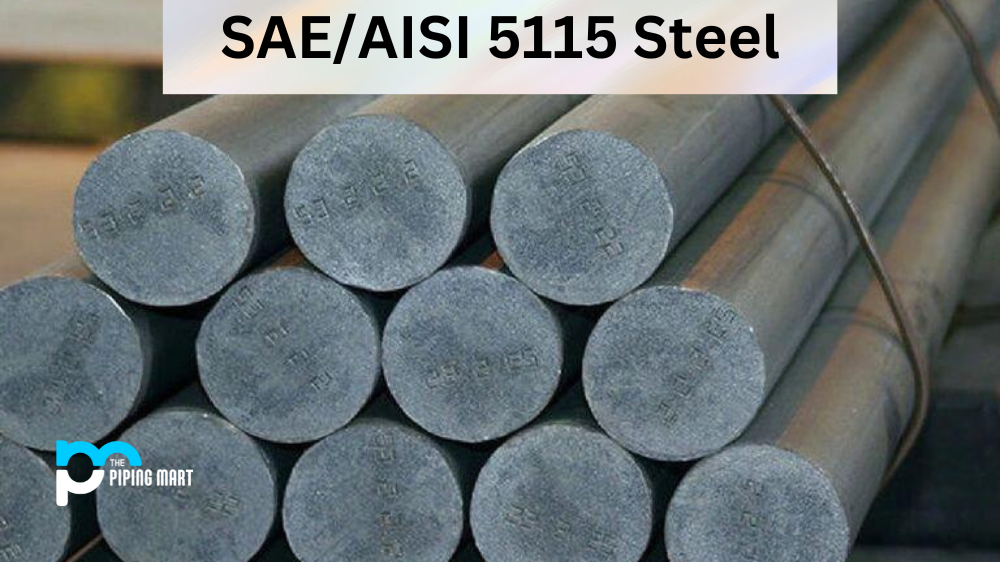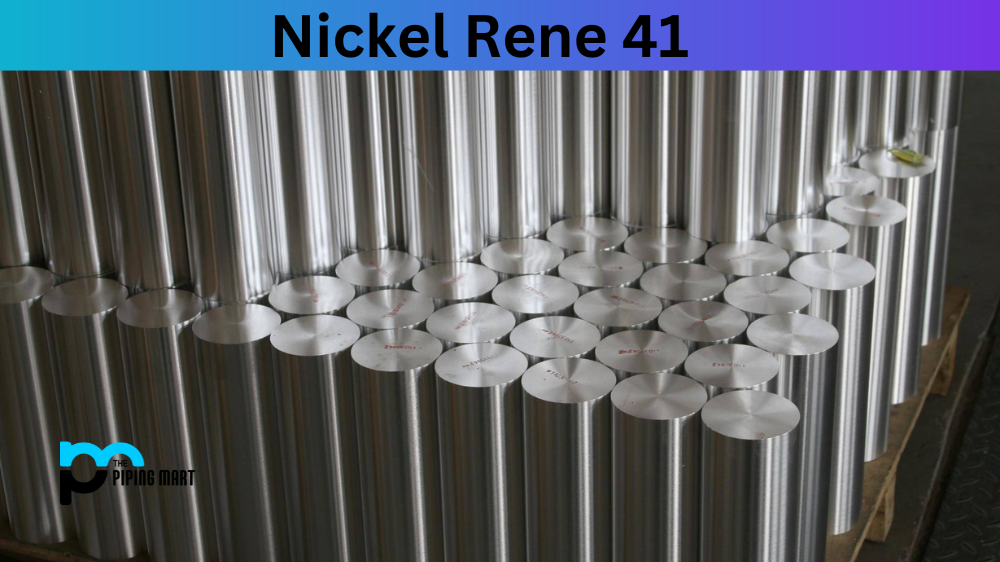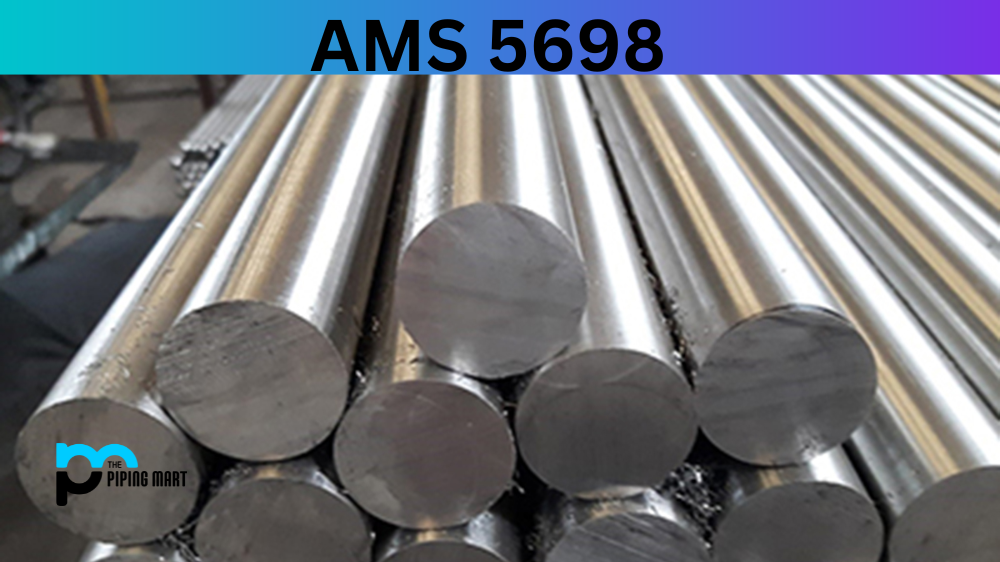AISI 5115 is a low-alloy steel containing manganese, molybdenum, and chromium. 5115 Alloy Steel is popular for its toughness, wear resistance, and strength. G51150 steel is often used in automotive parts, bearings, shafts, gears, and more. AISI 5115, also known as SAE 5115 and UNS G51150, is a low-carbon alloy steel that offers excellent weldability, machinability, and toughness. Comprised of elements such as copper, nickel, and chromium, AISI 5115 Alloy steel boasts a unique composition that lends to its exceptional physical and mechanical properties. With a high tensile strength and good wear resistance, this alloy is often used in construction, automotive, and aerospace applications. Whether you are seeking to manufacture heavy-duty machinery or high-performance components, AISI 5115 Alloy steel can provide the durability and reliability you need to get the job done. Let’s take a closer look at the uses of SAE/AISI 5115, its corrosion resistance, heat resistance, heat treatment machining techniques, and welding capabilities.
What Forms of AISI 5115 is Available at Piping Mart?
- Nut
- Bar
- Bolt
- Pipe
- Screw
- Tubing
- Valves
- Washers
- Flanges
- Fasteners
- Electrodes
- Stud Bolts
- Sheet Plates
- Pipe Fittings
- Forged Fitting
- Instrumentation Fittings
AISI 5115 Composition
| Element | Weight % |
| C | 0.13-0.18 |
| Mn | 0.70-0.90 |
| P | 0.035 (max) |
| S | 0.04 (max) |
| Si | 0.15-0.30 |
| Cr | 0.70-0.90 |
AISI 5115 Physical Properties
| Physical Properties | Metric | English | Comments |
|---|---|---|---|
| Density | 7.85 g/cc | 0.284 lb/in³ |
AISI 5115 Mechanical Properties
| Mechanical Properties | Metric | English | Comments |
|---|---|---|---|
| Tensile Strength, Ultimate | 780 – 1080 MPa @Thickness 30.0 mm |
113000 – 157000 psi @Thickness 1.18 in |
Case Hardened |
| 880 – 1230 MPa @Thickness 16.0 mm |
128000 – 178000 psi @Thickness 0.630 in |
Case Hardened | |
| Tensile Strength, Yield | 590 MPa @Thickness 30.0 mm |
85600 psi @Thickness 1.18 in |
Case Hardened |
| 600 MPa @Thickness 16.0 mm |
87000 psi @Thickness 0.630 in |
Case Hardened | |
| Elongation at Break | 10 % @Thickness 30.0 mm |
10 % @Thickness 1.18 in |
Case Hardened |
| Modulus of Elasticity | 200 GPa | 29000 ksi | Typical of Alloy Steel |
| Poissons Ratio | 0.29 | 0.29 | Typical of Alloy Steel |
AISI 5115 Thermal Properties
| Thermal Properties | Metric | English | Comments |
|---|---|---|---|
| CTE, linear | 12.0 µm/m-°C | 6.67 µin/in-°F | Typical of Alloy Steel |
| Specific Heat Capacity | 0.470 J/g-°C | 0.112 BTU/lb-°F | Typical of Alloy Steel |
| Thermal Conductivity | 52.0 W/m-K | 361 BTU-in/hr-ft²-°F | Typical of Alloy Stee |
AISI 5115 Uses
SAE/AISI 5115 steel has excellent strength and wears resistance properties which make it great for high-stress applications. It is commonly used to manufacture car parts such as axles, crankshafts, bearings, gears, and shafts. This type of steel is also frequently used for tools like hammers and wrenches due to its good machinability. Additionally, SAE/AISI 5115 can be used in the construction industry for structural components like beams or columns because it offers superior weldability characteristics.
AISI 5115 Uses in Industries
Automotive Industry
One of the most common uses for AISI 5115 steel is in the automotive industry. Due to its high strength and wear resistance, this type of steel is often used to make various components, such as gears, shafts, and axles. It is also commonly used in engine parts manufacturing, such as crankshafts and camshafts.
Aerospace Industry
AISI 5115 steel is also widely used in the aerospace industry due to its high strength and toughness. It is commonly used to make critical components for aircraft, such as landing gear, engine parts, and structural components. Its ability to withstand extreme temperatures and stress makes it a valuable material for this industry.
Construction Industry
AISI 5115 steel is often used as reinforcement bars or rebar in the construction industry. These bars are embedded in concrete structures to provide additional strength and stability. This type of steel’s high strength and durability make it ideal for use in buildings, bridges, highways, and other infrastructure projects.
Machinery Manufacturing
AISI 5115 steel is widely used in machinery manufacturing due to its excellent mechanical properties. It can be easily machined into various shapes and sizes without losing strength or toughness. This makes it an ideal material for making machine parts such as gears, shafts, bolts, and nuts.
Oil & Gas Industry
In the oil and gas industry, AISI 5115 steel is commonly used for drill collars, which are heavy-duty tubular components connected between the drill pipe and the bit during drilling operations. This type of steel has excellent fatigue resistance and can withstand high pressures and loads encountered during drilling.
Medical Equipment
Due to its biocompatibility (ability to not cause a harmful reaction when placed inside the body), AISI 5115 steel is also used in the medical equipment industry. It is commonly used to make surgical instruments, orthopaedic implants, and other medical devices that require high strength and corrosion resistance.
AISI 5115 Corrosion Resistance
SAE/AISI 5115 steel has good corrosion resistance but not as much as stainless steel because it does not contain nickel or chromium. In order to increase its corrosion resistance, you can use galvanizing treatments or coatings such as paint to protect the surface from rust or other forms of oxidation.
AISI 5115 Heat Resistance
The heat resistance of this type of steel depends on the amount of carbon present in the alloy – the higher the carbon content, the higher its heat resistance will be. However, even with a high carbon content, this material still cannot withstand temperatures above 600°C (1110°F). It should be noted that prolonged exposure to elevated temperatures can significantly reduce its mechanical properties over time, so it’s important to monitor these values regularly if you plan on using this material in an application that requires high-temperature stability.
AISI 5115 Heat Treatment
SAE/AISI 5115 can be heat treated by heating the material up to 845°C (1550°F) followed by air cooling or oil quenching depending on your desired hardness level(s). Higher temperatures produce a softer material, while lower temperatures result in harder materials with improved wear resistance characteristics. Additionally, this material can also be annealed by heating between 650-750°C (1200-1380°F) followed by slow cooling, which helps restore some ductility after hardening processes have been applied previously.
AISI 5115 Machining
This type of steel is relatively easy to machine so long as proper cutting speeds are used during operations, thanks to its moderate hardening rate compared with other types of steel available today. Common machining operations include turning, drilling, boring, reaming tapping, milling, etc. Additionally, since this alloy has good formability, you’re able to perform sheet metal forming operations without too much difficulty either!
AISI 5115 Welding
SAE / AISI 5115 is easily weldable using common arc welding methods such as gas tungsten arc welding (GTAW), gas metal arc welding (GMAW), shielded metal arc welding (SMAW), flux cored arc welding (FCAW), etc. When welding this material, preheat and post-heat treatments are usually required in order to restore optimal mechanical properties after completion – these steps can help minimize distortion during fabrication processes too!
Conclusion:
In conclusion, SAE / AISI 5115 has many beneficial properties that make it ideal for many industrial applications such as automotive parts bearing shafts, gear tools, structural components, etc. Furthermore, this type of steel has good corrosion resistance, although it should still be protected from rust oxidation if necessary due to its lack of nickel & chromium content; additionally, it’s capable of withstanding temperatures up to 600°C (1110°F) while having easy machinability weldability & formability characteristics all making it an excellent choice when looking for reliable materials!

Pipingmart is a B2B portal that specializes in metal, industrial and piping items. Additionally, we share the latest information and information about materials, products and various types of grades to assist businesses that are involved in this business.




